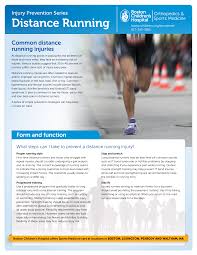Running Injuries – Which is the Most Common Injury That Runners Suffer From?
Three out of every four regular runners will experience an injury at some point during their running career. Thankfully, many injuries can be prevented. Running injuries such as patellofemoral pain (runner’s knee) are the most frequent. Shin splints and stress fractures are other common mishaps experienced by runners. To get the best treatment for these injuries, consider visiting Total Health & Rehab Center.
Runner’s Knee
The knee joint is a hinge between your thigh bone (femur) and shin bone (tibia). It’s surrounded by four ligaments, two semicircular pads known as menisci, and flexible tendons that connect your muscles to your bones. A patella, or kneecap, is the bony protrusion on the front of your knee that protects it. It slides up and down inside a groove on your femur (where it attaches to your lower leg bone, called the tibia) as you walk. Pain may occur if the patella is misaligned or not moving correctly, as well as when it rubs against nearby bone and soft tissue. Overuse or training too hard can lead to overuse or runners knee, especially if your body doesn’t get time to recover. A structured schedule with short and long-term objectives will help protect against this and keep your joints in top condition. To get relief from back pain and sciatica, visit Total Health & Rehab Center.
Iliotibial Band Syndrome
Iliotibial Band Syndrome, commonly referred to as ITBS, is the most common injury experienced by runners. This injury causes pain on the outside of your knee which may radiate up your thigh. It is believed to be caused by repetitive bending and stretching of your leg, which can irritate the iliotibial band. This band runs along the outside of your leg from your hips to your shinbone (tibia). When running or walking for extended distances, your knee may flex and extend, shifting this thick bunch of tissue over the outer edge of your thighbone. This movement can irritate adjacent tissues, leading to pain and swelling. Other causes include excessive foot pronation, weak hip abductor muscles and internal tibial torsion. All these factors can irritate the iliotibial bands and lead to inflammation and painful symptoms.
Ankle Sprain
One of the most frequent injuries runners experience is an ankle sprain. This can happen when your ankle twists or rolls inward (eversion sprain) or outward (inversion sprain). Treatment for an ankle sprain usually consists of RICE: rest, ice, compression and elevation. You may also be prescribed nonsteroidal anti-inflammatory drugs (NSAIDs) to reduce pain and swelling. After a few days of healing and when the swelling has subsided, begin rehabilitation exercises for range-of-motion (ROM) exercises as well as strengthening and balance exercises prescribed by your doctor. Running athletes who are susceptible to ankle sprains should wear stable shoes and tape up any weak areas on their ankles for extra support. If the sprain is severe or involves more than what can be seen, you should see a foot and ankle specialist for further evaluation and treatment.
Muscle Tears
Muscle tear, also known as a strain, is the most frequent injury experienced by runners. This occurs when muscles are overstretched and microscopic tears develop within their fibers. Muscle strains can range in intensity from mild to severe and cause discomfort and swelling or bruising. Generally, muscle strains improve with RICE therapy: rest, ice, compression and elevation. Grade 1 (mild) strains involve only a limited number of muscle fibers and usually causes no pain until after the activity that caused it has been completed. Grade 2 (moderate) strains involve more muscle fibers and may cause immediate discomfort. Medication, physical therapy, and stretching may be needed to help the muscle heal and repair itself. If you need professional help with your muscle tears or any other injury, don’t hesitate to contact Total Health & Rehab Center.




